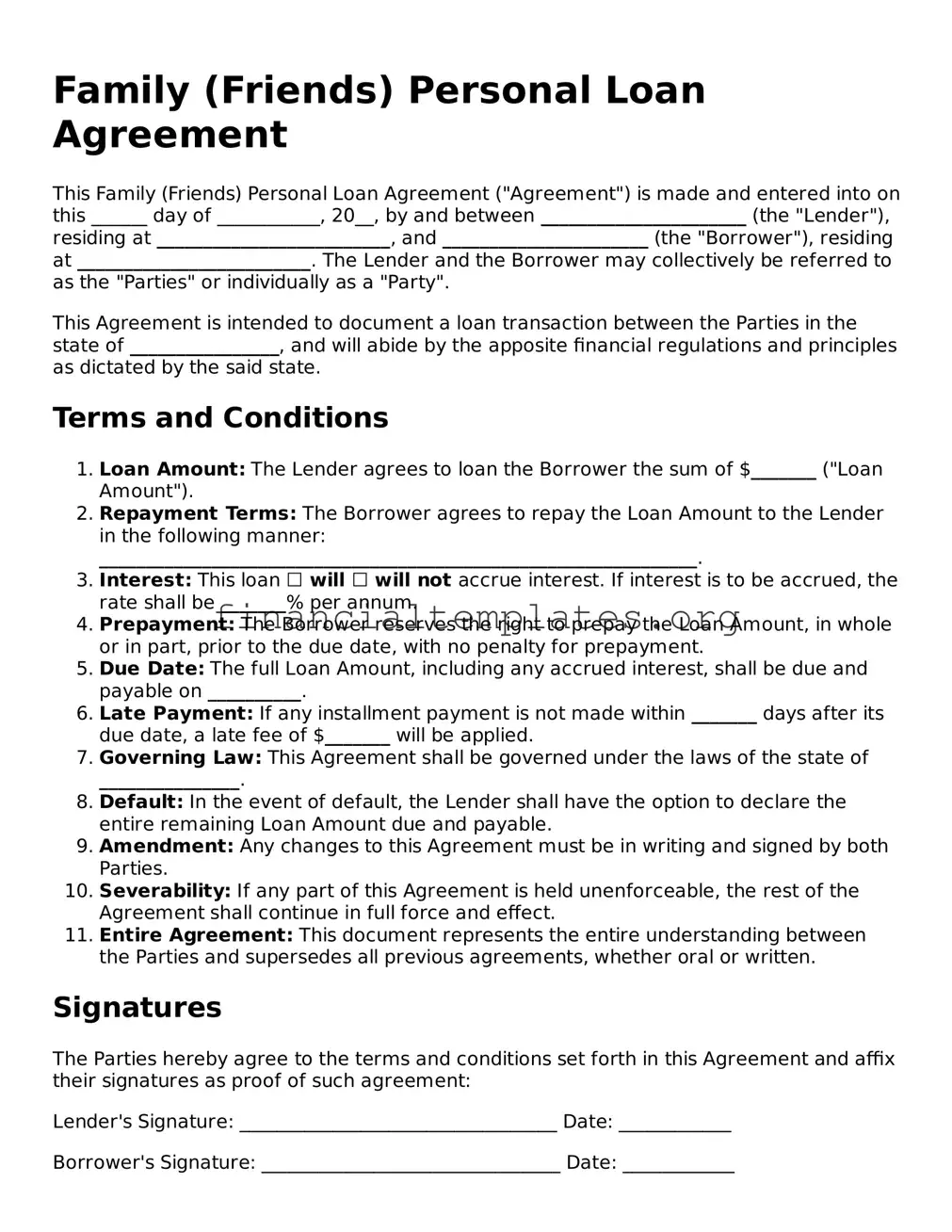Family (Friends) Personal Loan Agreement
This Family (Friends) Personal Loan Agreement ("Agreement") is made and entered into on this ______ day of ___________, 20__, by and between ______________________ (the "Lender"), residing at _________________________, and ______________________ (the "Borrower"), residing at _________________________. The Lender and the Borrower may collectively be referred to as the "Parties" or individually as a "Party".
This Agreement is intended to document a loan transaction between the Parties in the state of ________________, and will abide by the apposite financial regulations and principles as dictated by the said state.
Terms and Conditions
- Loan Amount: The Lender agrees to loan the Borrower the sum of $_______ ("Loan Amount").
- Repayment Terms: The Borrower agrees to repay the Loan Amount to the Lender in the following manner: ________________________________________________________________.
- Interest: This loan ☐ will ☐ will not accrue interest. If interest is to be accrued, the rate shall be _______% per annum.
- Prepayment: The Borrower reserves the right to prepay the Loan Amount, in whole or in part, prior to the due date, with no penalty for prepayment.
- Due Date: The full Loan Amount, including any accrued interest, shall be due and payable on __________.
- Late Payment: If any installment payment is not made within _______ days after its due date, a late fee of $_______ will be applied.
- Governing Law: This Agreement shall be governed under the laws of the state of _______________.
- Default: In the event of default, the Lender shall have the option to declare the entire remaining Loan Amount due and payable.
- Amendment: Any changes to this Agreement must be in writing and signed by both Parties.
- Severability: If any part of this Agreement is held unenforceable, the rest of the Agreement shall continue in full force and effect.
- Entire Agreement: This document represents the entire understanding between the Parties and supersedes all previous agreements, whether oral or written.
Signatures
The Parties hereby agree to the terms and conditions set forth in this Agreement and affix their signatures as proof of such agreement:
Lender's Signature: __________________________________ Date: ____________
Borrower's Signature: ________________________________ Date: ____________
